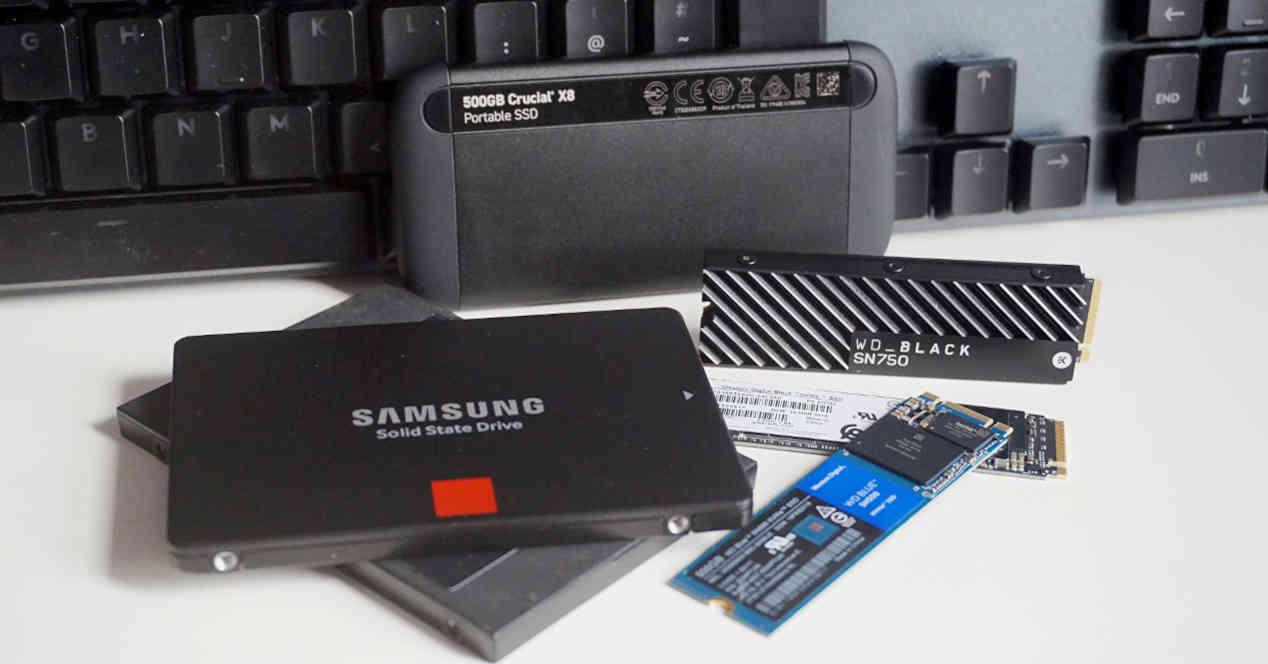Solid drives promise to increase performance in games, but this claim is not entirely true and there are a number of things in both hardware and software that lead to limitations in SSDs.
SSD Limitations for Gaming
We have compiled the things that will affect the performance of SSDs in games, because although they replace the hard drive, they also have their limits and are not the panacea that many advertise.
Little data to transmit from the SSD
If we update any of the components of our PC we will see an increase in performance, even if we install an SSD we will see a reduction in transfer time compared to a conventional hard drive. But is he making good use of the material? The reality is, no.
The vast majority of applications run programs from RAM because the hard drive is too slow in latency and bandwidth to serve as memory. The same happens with NAND Flash memory, but on a much smaller scale, so it is also necessary to copy the data to RAM. The difference? NVMe SSDs are tens of times faster and can therefore transmit more data.
It is the program code that is responsible for managing the sending of data from disk to RAM memory, so regardless of the transfer speed between the storage unit and RAM, if the data volume is low, no benefit will be taken. For example, in games that relied on transmitting data from an optical drive, the SSD cannot avoid the minimal existence of loading screens.
Data decompression is not free
The big problem with SSDs, whether SATA or NVMe, is the fact that storage is much more expensive than a conventional hard drive. Everything therefore points to the implementation of real-time data compression and decompression units. These disks must be able to decompress large amounts of gigabytes of data per second in real time.
If you have ever had to install any of these pirated versions of some heavy internet programs, you will find that they are usually extremely compressed and require a lot of CPU power to install. With that premise in mind, now think about the computational cost of unzipping this amount of data in just one second.
We are talking about sacrificing several whole cores just for this task and the only way in the future for SSDs to eventually catch up with hard drives is to use real-time compression and decompression mechanisms that allow you to increase their capacity. That time has not yet come, but we are sure that, as has happened in consoles, future processors from Intel and AMD will integrate these units.
SSD limitations by consumption
The third issue is power consumption, the PCI Express interface doubles its speed with each generation, but for backward compatibility it keeps the same pins. What does it mean? Well, it consumes more and more and this consumption increases if we increase the bandwidth.
The easiest way to do this would be to double the bandwidth, but that will almost quadruple what is consumed per bit sent. Whenever a new PCI Express standard is invented, the challenge for engineers is not to get double the bandwidth, but to create a compatible interface that keeps consumption at certain levels.
How does this affect NVMe SSDs? Well, in low power consumption laptops, we can find bandwidth stratified interfaces to reduce the power consumption of NVMe data transfer. So once these units replace the hard drives of a lifetime in these computers, we will see inferior performance in the NVMe SSD of these computers and therefore in games that run on these computers have performance limitations despite the use. SSD compared to desktop PCs.
SSD memory channels as limitations
The fourth limitation of SSDs in games is the memory channels between the flash controller and NVMe chips. As with RAM, the number of memory channels corresponds to the number of PC components that can access data from the SSD at the same time. Thus, a low number of memory channels means that some of the copy requests to and from the SSD will have additional latency by having to keep waiting.
The number of channels on an SSD matches the number of NVMe chips on the board, so a low-channel flash controller will never perform this well. Taking into account that more chips mean higher costs and the cost of storage is expensive, we may fall into the error that an NVMe SSD of a certain amount of storage has the same performance as another. with the same amount.
One way to optimize access is to distribute the sequential data over several chip units of the NVMe SSD, if for example we look for the string “1234” then in a 4 channel SSD each digit can go to one of the chips. memory, so that can take all the data at the same time. The problem with this system is that it would only feed one client and therefore cause latency to the rest of the stuff on the PC.
The GPU is also a bottleneck
With the arrival of DirectStorage, the GPU becomes a client of the SSD disk and therefore of its flash controller, which increases the number of requests to the flash controller. So taking into account the problem of SSD memory channels when there are multiple CPU requests, now imagine if we add it to the GPU, which is the fifth and final limitation of SSD in games.
Many SSDs are not intended to power with the same performance systems where the CPU and GPU request the same, only the CPU, and even with so many applications continue to run smoothly with four cores, some of them even with two cores. As the average number of cores increases and the GPU is added, many flash controllers lose performance, not because of speed, but because they are not fast enough to handle sending and receiving data. .
It will therefore be necessary to create flash controllers not faster in terms of bandwidth, but with the possibility of supporting more memory channels and being able to manage a large number of them.
Table of Contents














